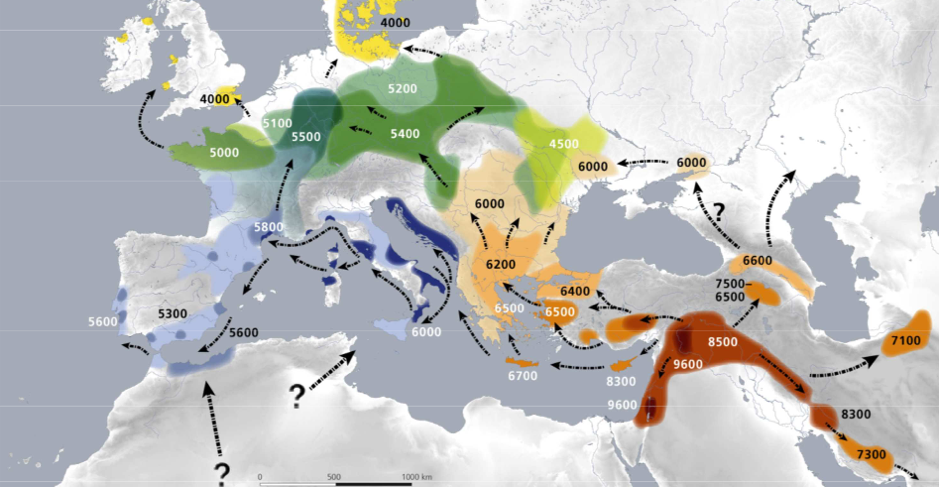By Dan Sarkar, Third Year, Chemistry
Can you bee-lieve it? A team of scientists, led by the University of Bristol, studying the spread of honey cultivation within ancient human civilisations, have found unique chemical evidence for its use in West Africa dating back over 3,500 years.
Whether it is used as a sweetener or a marinade, honey is considered to be a delicacy by many around the world. Its admiration can also be seen in popular culture – through the word’s use as a term of endearment, all the way to being the favourite food a certain yellow bear. Even Manchester adopted the bee as its symbol, in order to praise their hard work ethic.
Despite our widespread use today, there is little surviving evidence as to when humans began harvesting honey from beehives. Rock art depicting bees and honeycombs has been found in various places across the world, however scientists do not know when these any pictures were created.

However, it is known that honey and beeswax were considered to be incredibly valuable and versatile resources by ancient humans. From medicines and cosmetics, to adhesives and waterproofing, they took advantage of them in a number of ways.
The utilisation of honey and beeswax can be a marker for significant advancements within societies, particularly the construction of permanent dwellings and the domestication of animals. Pottery containing beeswax is typical of societies that have achieved this level of development, the Neolithic era, which spanned from 10000 to 4500 BCE.
Whilst pottery from Europe and the Middle East has been studied before, other areas have been largely neglected until now. The University of Bristol-led research group recently carried out a chemical analysis of more than 450 prehistoric potsherds (broken pieces of ceramics) from the Central Nigerian Nok culture, in order to find out more about their dietary habits and way of life.

Their findings, published in Nature last week, revealed that around one third of the pottery used by the ancient Nok people were used to process or store beeswax. The chemical analysis could identify this due to the traces of the unique set of lipids (fats, oils and waxes) that beeswax comprises of. These were likely present in the pottery due to the melting of wax honeycombs due through gentle heating, which would lead to its absorption within the vessel walls, or due to the cooking and storage of honey.
Honey is often an important resource for hunter-gatherers. There are several groups in Africa, such as the Efe foragers of the Ituri Forest in Eastern Zaire or the Molo community in West Timor, Indonesia, who have historically utilised all parts of the beehive and relied on honey as their main source of food. Using ropes and poles, they are known to harvest beehives as high as thirty metres above the group whilst sending up smoke to lure the bees to sleep.
Dr Julie Dunne, from the University of Bristol’s School of Chemistry, said: ‘This is a remarkable example of how biomolecular information extracted from prehistoric pottery, combined with ethnographic data, has provided the first insights into ancient honey hunting in West Africa 3,500 years ago.’
Whilst the presence of beeswax in potsherds has been documented in other parts of the world, co-author Professor Peter Breunig from Goethe University, explained that ‘the fact that the Nok people exploited honey 3500 years ago was completely unexpected and is unique in West African Prehistory.’

Additionally, the presence of beeswax in ancient pottery has shed considerable light on how modern farming techniques spread around the world. In a 2015 study, also conducted by scientists at the University of Bristol, potsherds containing beeswax collected from Neolithic sites across Eurasia were analysed.
Of those containing beeswax, the oldest (approx. 9000 years old) was found in Turkey, and the newest (approx. 4000 years old) were found in the UK and Scandinavia. Trends in the dates where beeswax traces are present closely mirror the spread of the Neolithic way of life across mainland Europe from the Near East.
Neonics: the common pesticides wreaking havoc on the sleep of insects
‘Carbon Dots’: Bristol University scientists spearhead sustainable alternative to growing crops
Now more than ever, unsustainable cultivation practices and the effects of climate change are threatening honeybee populations across the world.
In an effort to preserve bee populations, communities are looking towards the techniques of the ancient Nok people and those originating from other Neolithic civilisations, who have harvested bee products sustainably for thousands of years.
Featured Image: CIFOR / Nanang Sujana
What sustainable agricultural methods should the UK implement to take care of our bees?









